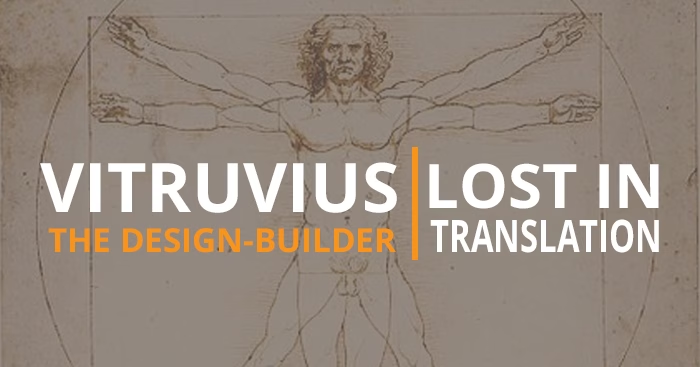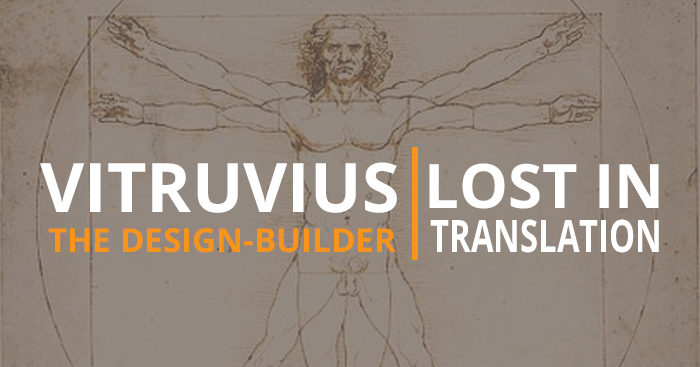Vitruvius, the Design-Builder: Lost in Translation


Marcus Vitruvius Pollio, known as Vitruvius, was a Roman architect who wrote a classic book called Ten Books on Architecture around 20 BC. However, he was much more than an architect in the modern sense of the word—he was a design-builder.
Vitruvius is often quoted, and his book is credited for initiating a return to the inspiration of antiquity during the Renaissance. But most people receive his words distilled through the ideas of others. Only a small portion of the knowledge he put down on paper has ever been widely disseminated. And other equally powerful parts of the book are never referred to, and they remain relatively unknown to most of the world.
One of these parts is actually in the first words of the book. In Chapter 1, “The Education of the Architect,” Vitruvius says:
“1. The architect should be equipped with knowledge of many branches of study and varied kinds of learning, for it is by his judgement that all work done by the other arts is put to test. This knowledge is the child of practice and theory. Practice is the continuous and regular exercise of employment where manual work is done with any necessary material according to the design of a drawing. Theory, on the other hand, is the ability to demonstrate and explain the productions of dexterity on the principles of proportion.
2. It follows, therefore, that architects who have aimed at acquiring manual skill without scholarship have never been able to reach a position of authority to correspond to their pains, while those who relied only upon theories and scholarship were obviously hunting the shadow, not the substance. But those who have a thorough knowledge of both, like men armed at all points, have the sooner attained their object and carried authority with them.”
Vitruvius is very clear that the “practice” of architecture is building (“employment where manual work is done with any necessary material according to the design of a drawing”). This composes one half of the education required of an architect. If you put these words into the framework of today, you can see how far we have strayed in the education of the architect.
In the great majority of cases, today’s education of the architect is woefully lacking. It focuses on theory and does not teach students how to build or how buildings go together. The “practice” of architecture stops with drawing pictures. It’s disconnected from its execution. Vitruvius warns about those who relied upon theories and scholarship and how they ended up hunting the shadow, not the substance.
When I graduated with a degree in architecture and started working at a design studio, I had no idea how to direct others or what to build, because I had never done it before. I was largely surrounded by others with the same background—it was a blind-leading-the-blind scenario.
Design-builders stop this downward spiral because we follow Vitruvius’s words of wisdom. With a complete education, we create better buildings in a more efficient manner, and this benefits us all.
Learn more about NEDC’s process here!
 David Supple is the owner and CEO of New England Design and Construction. He is currently working on writing a book about his experiences and thoughts in the design and construction industry. David is a graduate of Tufts University with a degree in architecture. In California, he trained as an architect for three years, designing, directing, and managing 50- 100,00 square foot renovations. He founded New England Design & Construction in 2005 and became incorporated in 2006, and rapidly expanded the company to servicing the Greater Boston Area. He is an aspiring comedian but currently he only practices with his wife.
David Supple is the owner and CEO of New England Design and Construction. He is currently working on writing a book about his experiences and thoughts in the design and construction industry. David is a graduate of Tufts University with a degree in architecture. In California, he trained as an architect for three years, designing, directing, and managing 50- 100,00 square foot renovations. He founded New England Design & Construction in 2005 and became incorporated in 2006, and rapidly expanded the company to servicing the Greater Boston Area. He is an aspiring comedian but currently he only practices with his wife.
